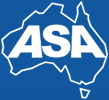Membership
Membership in the Association is divided across two categories, they Being:
| (A) voting (B) and non-voting (associate) members. (A) A Voting Member of the Association will be any person which is: (i) an underwriter; (ii) an underwriting agency; (iii) a reinsurer, or (iv) other organisation, who the Voting Members at their discretion consider suitable to be a Voting Member of the Association. The general intention is that Voting Members are to reflect generally the underwriters within the surety and deposit bond markets. The distinction in categories was implemented so as to ensure that the Association retained a focus on those members, it being the initial intent of the founding members to have a representative body for those entities assuming primary risk within the surety market. (B) An Associate Member of the Company will be any person which is: (i) a broker; (ii) a fronting company; (iii) a consultant or advisor; or (iv) other organisation,who the Voting Members in their discretion consider suitable to be an Associate Member of the Association. Again, the intent is to provide for a class of membership outside of those underwriters or primary risk-takers noted above who have an interest in the surety and deposit bond markets. Each Voting Member has 1 vote. Voting Members and Associate Members are entitled to attend and address the general meetings of the Association. |
Committees
| There are two member committees: The Contract Surety Committee and the Deposit Bond Committee. Members can apply to become members of either committee. The Voting Members of each committee then vote to either accept or reject the membership and, if approved, the application is referred to the Directors for ratification. The new member then becomes a member of the company and the relevant membership committee. Each committee is governed by a charter which sets out the objectives of the committee, the provision for the election of a chairperson, voting rights and general rules for the governing of the committee. All decisions, proposed activities and expenditures of each committee must be approved by the Directors before those decisions, activities or expenses can be implemented or incurred. |
Meetings
Committee meetings are held at times determined by the members of the relevant committee. Typically, 3-4 meetings a year may be expected – more or less depending on the matters before each committee.
Directors
Directors are generally appointed at the AGM each year. The Directors then appoint a President and Vice-President to hold office for the coming year.
Directors have the responsibility of governing the affairs of the Association, and ratify the proposed activities and funding needs of the committees.
